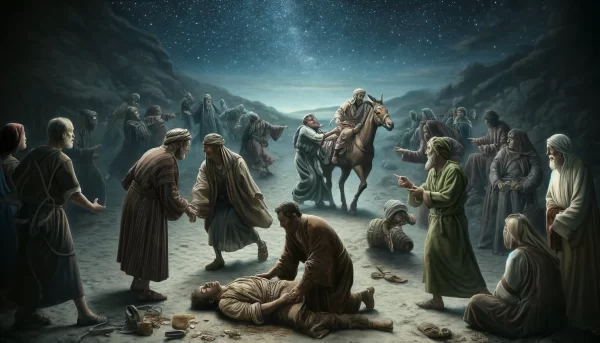Unpacking the Profound Lessons from the Parable of the Good Samaritan
The Parable of the Good Samaritan stands out as a timeless beacon of compassion and unity in a world increasingly fragmented by social, cultural, and political divisions. Presented by Jesus in the Gospel of Luke, this story emerges in response to a probing question about inheriting eternal life. The narrative transcends its religious context to challenge our modern perceptions of community and assistance.
When a lawyer asked Jesus, “Who is my neighbor?” he was likely seeking affirmation for the limited scope of his moral responsibility. However, Jesus’ response through this parable broadened the horizon dramatically, challenging not only the lawyer but all of us to redefine our notion of neighborliness and kindness.
The implications of this parable resonate today more than ever, urging us to look beyond our prejudices and societal boundaries to help those in need, regardless of their background or beliefs.
As we delve into this profound story, let us explore not only the details of the narrative but also its deeper meanings and the impactful ways we can apply its lessons in our daily lives, fostering a more compassionate and understanding world.
The Story Retold

Imagine a dusty road winding through the barren landscape from Jerusalem to Jericho. It was along this notorious path that a traveler found himself in the grips of violent robbers. Stripped of his possessions, beaten, and left half-dead, he lay vulnerable and desperate.

This road was frequented by many, including those who served in religious capacities, from whom one might expect acts of mercy.
As the injured man lay suffering, a priest happened upon him. However, despite his role and the teachings he espoused, he chose to cross to the other side of the road, distancing himself from the victim.

Shortly after, a Levite, another respected figure in religious circles, approached. Like the priest, he too saw the wounded man but decided to pass by without offering aid.

Then, an unexpected figure emerged on the scene—a Samaritan. The Jews and Samaritans shared a mutual disdain, steeped in centuries of ethnic and religious conflict. Yet, it was this Samaritan who paused in his journey, compelled not by obligation but by compassion.

He approached the victim, tended to his wounds with oil and wine, and carefully bandaged them. Recognizing the need for ongoing care, he lifted the injured man onto his own donkey, brought him to an inn, and took responsibility for his recovery.

Before departing the next day, the Samaritan provided the innkeeper with additional funds to ensure the man’s care continued, promising to cover any further expenses upon his return.
This act of kindness from an unlikely hero not only provided immediate relief but also set a profound example of unconditional compassion and solidarity across entrenched divides.
Deeper Meaning
The Parable of the Good Samaritan is rich in symbolism and challenges us to think deeply about our moral responsibilities and the inherent biases that may influence our actions. At its core, this parable subverts the expected roles and behaviors of its characters, offering a powerful critique of societal and religious norms.
Societal and Religious Roles Reversed: In the narrative, the priest and the Levite represent the religious elite, individuals who were viewed by society as moral guides and caretakers of faith. Their roles obligated them not only to teach compassion but to embody it.
However, their decision to ignore the suffering man highlights a critical disconnect between religious law and the practice of genuine empathy. This act of neglect serves as a mirror reflecting the often uncomfortable truth about societal hypocrisy—where sometimes those expected to lead in righteousness are the ones who falter.
The Samaritan as a Symbol of True Neighborliness: On the other hand, the Samaritan, an outsider despised by Jews due to longstanding ethnic and religious tensions, becomes the embodiment of what it means to be a neighbor.
His actions break through the barriers of prejudice, showing that cultural or religious identities do not bind mercy and kindness. Jesus uses this unexpected hero to illustrate that neighborly love transcends societal divisions and that our ‘neighbor’ can be anyone in need—regardless of background or belief.
Challenging Prejudices: By choosing a Samaritan as the hero, Jesus not only highlights the universality of compassion but also directly challenges the prejudices of his listeners. It is a call to his audience then, and to us now, to examine whom we consider ‘worthy’ of our help and to expand our circles of empathy beyond those we are comfortable with.
This parable is not just a critique but a directive. It compels us to confront our own biases and to act with kindness and compassion, especially in situations where it might be least expected but most needed. It urges us to be proactive in our love, to crossroads, and to bridge divides in the service of one another.









